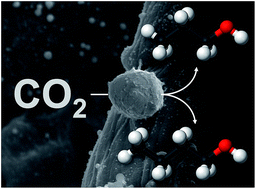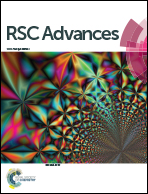CO2 reduction using paper-derived carbon electrodes modified with copper nanoparticles†
Abstract
The conversion of CO2 into useful chemicals can lead to the production of carbon neutral fuels and reduce greenhouse gas emissions. A key technological challenge necessary to enable such a process is the development of substrates that are active, cost effective, and selective for this reaction. In this regard, the reduction of CO2 via electrochemical means is one of the most attractive alternatives but still requires rather unique electrodes. Considering the potential of this approach, this report describes a one-step methodology for the synthesis of carbon electrodes derived from simple paper and modified with various metallic nanoparticles. Upon a preliminary selection based on the catalytic activity towards CO2 reduction, the electrodes containing CuNPs were further characterized by Raman spectroscopy, and electrical/electrochemical techniques. These electrodes were then applied for the electrochemical reduction of CO2, leading to the formation of compounds with one carbon atom (formic acid), two carbon atoms (ethenone), three carbon atoms (propanoic acid) and four carbon atoms (butanol and butanoic acid).



 Please wait while we load your content...
Please wait while we load your content...